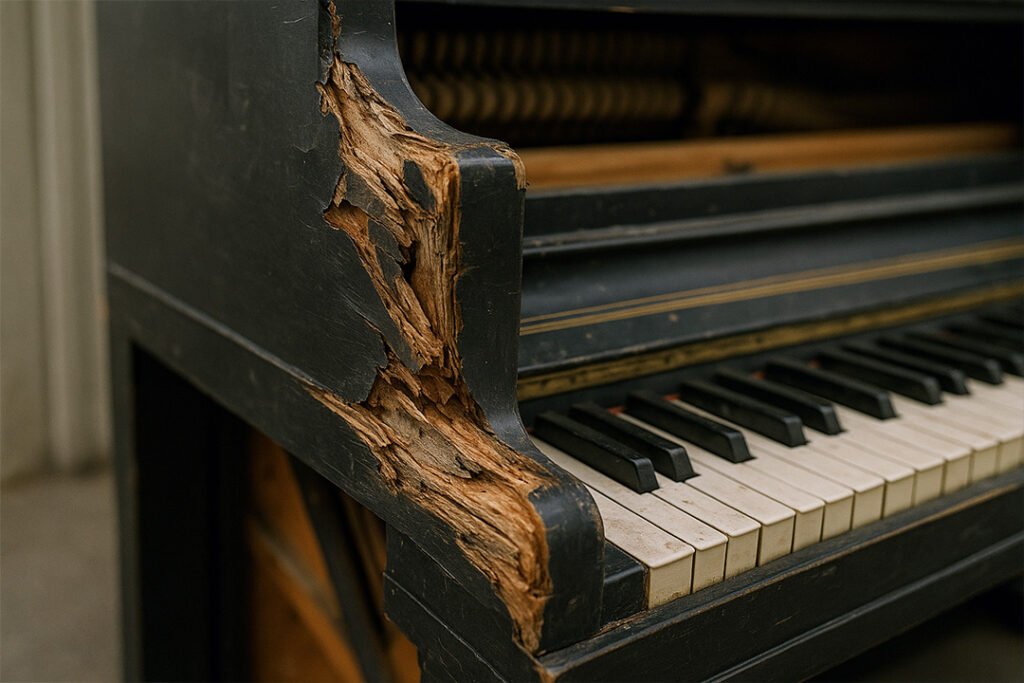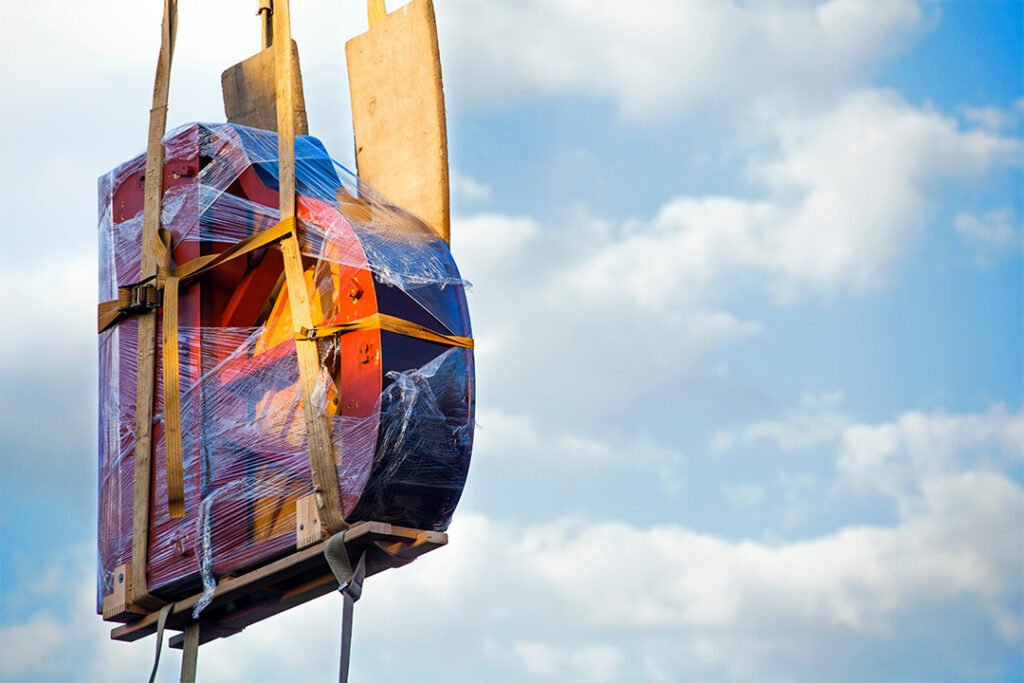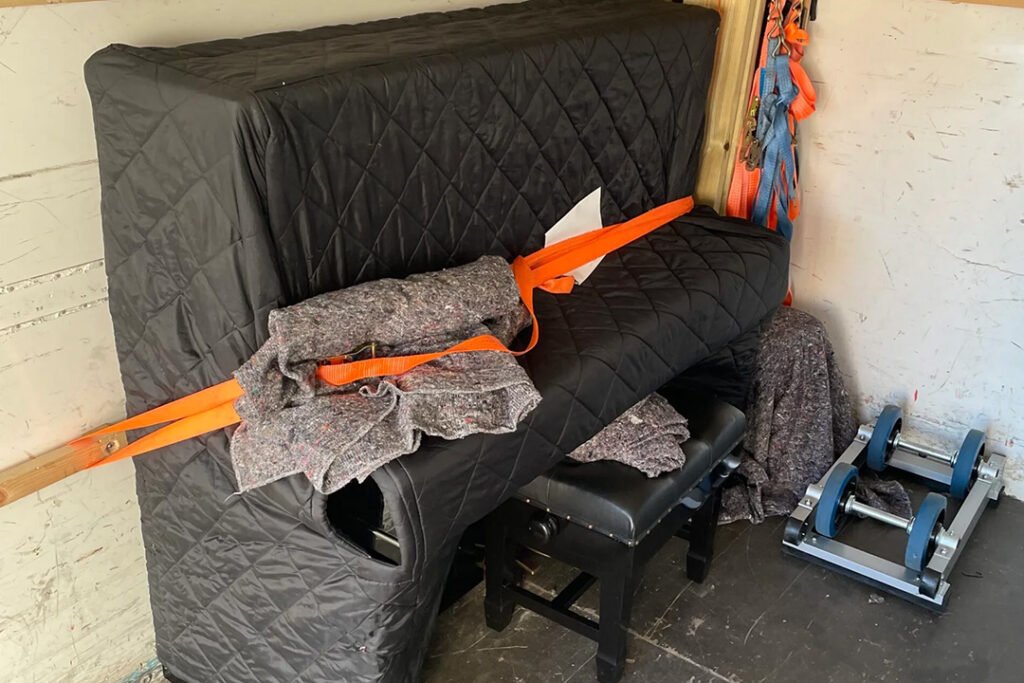
Moving a piano is a complex task that requires careful planning and professional assistance to avoid costly mistakes. Understanding common pitfalls, such as underestimating the piano’s weight, improper lifting techniques, and inadequate protection, can help ensure a safe and successful move.
Table of Contents
Introduction to Common Piano Moving Errors
Moving a piano is no small feat. These majestic instruments are not only heavy, with uprights weighing between 180 to 270 kg and grands reaching up to 545 kg, but they are also incredibly delicate. A simple misstep can lead to costly repairs or even total loss. Many underestimate the challenges involved, thinking a DIY approach will save money. However, improper lifting techniques, such as tilting or lifting by the legs, often result in damage. It’s essential to understand these common pitfalls to ensure your piano arrives safely at its new home.
The consequences of a DIY move gone wrong can be serious and expensive. From damaging the instrument to risking personal injury, the risks are significant. Pianos are extremely sensitive to bumps and environmental changes, making careful handling crucial. Understanding the common mistakes in piano moving can help you avoid these pitfalls and ensure a smooth transition for your instrument.
- Pianos are extremely heavy and sensitive to bumps and environmental changes.
- DIY moves often underestimate risks of injury and damage.
- Improper handling can lead to costly repairs or even total loss.
Mistake 1: Underestimating the Weight and Size of Pianos
Moving a piano is a task that requires more than just strength; it demands a clear understanding of the instrument’s weight and dimensions. This is not a job for one person alone. For an upright piano, at least four people are necessary, and a grand piano may require six or more.
Beyond manpower, the right equipment is crucial. Essential tools include piano dollies, skid boards, and straps, which help ensure the safety of both the piano and the movers. Attempting to move a piano without these can result in significant damage to the instrument and pose serious injury risks. Therefore, it’s often wise to consider professional assistance to mitigate these risks.
- Upright pianos weigh 180–270 kg; grand pianos can weigh up to 545 kg.
- At least four people are needed for upright pianos; grand pianos may require six or more.
- Essential equipment includes piano dollies, skid boards, and straps.
- Underestimating risks both piano damage and personal injury.
Mistake 2: Improper Lifting Techniques in Piano Moving
Improper lifting techniques are a common mistake when moving pianos, posing risks not only to the instrument but also to the movers. Immense weight makes them challenging to handle, and lifting them incorrectly can lead to significant damage. For instance, tilting or lifting a piano by its legs or pedals can compromise its structural integrity and result in costly repairs or even total loss.
To avoid these pitfalls, it’s essential to use proper lifting techniques. Always lift with your legs, not your back, to prevent personal injury. Keep the piano level during the move and lift from the base, not the legs or pedals, which are not designed to support the full weight of the piano. Additionally, moving a piano is not a task for one person; it requires a team effort. At least four people are needed for an upright piano, while a grand piano may require six or more. Investing in proper equipment, such as piano dollies and straps, can also facilitate a safer and more efficient move.
- Lift with your legs, not your back, to prevent injury.
- Keep the piano level and lift from the base, not the legs or pedals.
- Use a team of at least 4-6 people, depending on the piano size.
- Invest in proper equipment like piano dollies and straps.
Mistake 3: Skipping Professional Help for Safe Piano Relocation
Considering moving your piano by yourself might seem like a cost-effective solution, but it often leads to more complications than anticipated. Pianos are not only heavy but they are also delicate instruments that require careful handling. Without the proper equipment, such as piano dollies, skid boards, and straps, you risk damaging the piano or injuring yourself.
Professional piano movers like us bring more than just strength; they offer the expertise and tools necessary to safely transport these hefty instruments. Their experience is invaluable in challenging situations, such as navigating stairs or tight spaces, and when handling valuable pianos. They use specialised equipment, including ramps and lift-gates, to ensure safe loading and unloading. Additionally, professional movers are typically insured, providing peace of mind that your piano is protected against potential mishaps.
While hiring professionals might seem expensive initially, with local moves for an upright piano costing between £90 and £200, and long-distance moves for a grand piano ranging from £750 to £900, it is a worthwhile investment.
- Professional movers use specialised equipment like dollies and skid boards.
- Essential for moving through stairs, tight spaces, or with valuable pianos.
- Insurance coverage provides added protection.
- The cost of professional help is often less than potential repairs or medical bills.
Mistake 4: Inadequate Protection During Piano Transport
Ensuring a piano is well-protected during transport is crucial to avoid damage. Improper protection, such as insufficient padding, can lead to scratches, dents, and even internal damage, which can be costly to repair. Just as you wouldn’t send a fragile item without proper packaging, a piano requires careful attention to its protection during a move.
- Wrap the piano completely with thick moving blankets or specialised piano covers to cushion every inch.
- Secure the padding with strong tape or straps to prevent it from slipping during transport.
- Use corner protectors to safeguard the piano’s edges from bumps.
- Ensure the piano is tightly secured in the moving vehicle to prevent shifting.
- Consider investing in a piano board to keep the piano level and stable during the move.
Mistake 5: Ignoring Environmental Factors in Piano Moves
Moving a piano involves more than just physical effort; it requires careful consideration of environmental factors. Pianos are highly sensitive to changes in temperature and humidity, which can lead to wood warping and strings detuning. Ignoring these factors can result in costly repairs or even permanent damage to the instrument.
- Schedule the move on a day with mild weather to minimise exposure to extreme temperatures.
- Ensure the piano is kept in a climate-controlled environment during transit to prevent damage from humidity and moisture.
- Use protective covers to shield the piano from environmental changes.
- Allow the piano to acclimate to its new environment for 4–8 weeks before tuning to ensure stability.
Conclusion and Final Tips for Safe Piano Relocation
Moving a piano is a challenging task that demands meticulous planning and preparation. These instruments are not only heavy, with uprights weighing up to 270 kg and grands up to 545 kg, but also sensitive to movement and environmental changes.
Hiring professional piano movers is often a wise investment, particularly for complex scenarios involving stairs or narrow spaces. Professionals come equipped with the necessary tools, such as piano dollies and skid boards, to ensure safe transport. While the cost might seem high, ranging from £90 for local upright moves to £900 for long-distance grand piano relocations in the UK, it can prevent potential repair expenses.
Once relocated, allow your piano to acclimate for several weeks before tuning. This period helps the instrument adjust to its new environment, maintaining its structural integrity and musical quality.
- Thorough planning is essential to prevent damage.
- Consider professional movers for challenging moves.
- Let the piano acclimate before tuning to ensure optimal performance.
Frequently Asked Questions
Why is it important to hire professional movers for a piano?
Professional movers have the expertise and equipment needed to safely transport heavy and delicate pianos, reducing the risk of damage and injury.
What equipment is essential for moving a piano?
Essential equipment includes piano dollies, skid boards, straps, and protective padding to ensure safe and secure transport.
How can environmental factors affect a piano during a move?
Pianos are sensitive to temperature and humidity changes, which can cause wood warping and string detuning. It’s important to keep them in climate-controlled environments.
What are the risks of moving a piano without professional help?
Without professional help, there’s a higher risk of damaging the piano and causing personal injury due to improper handling and lack of necessary equipment.


